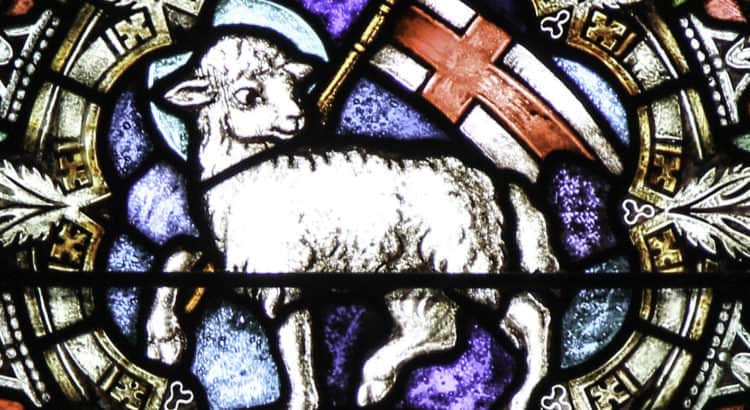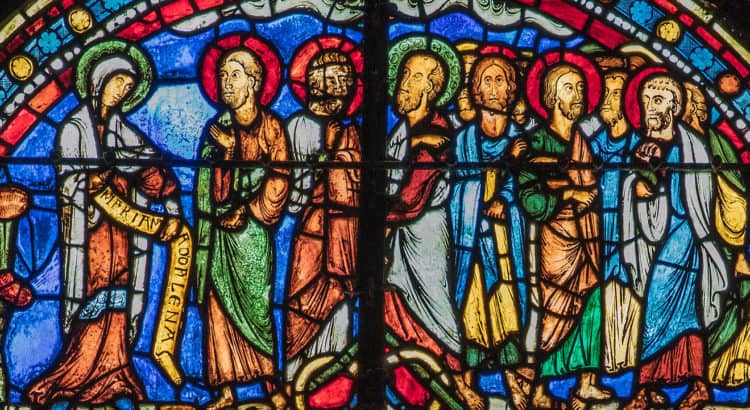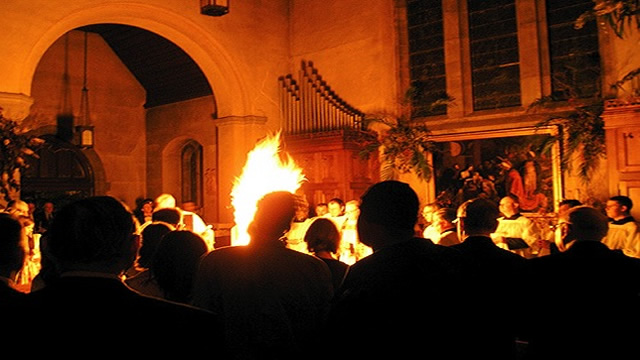A sermon for the Fourth Sunday of Easter, Year C:
Acts 9:36-43; Psalm 23; Revelation 7:9-17; John 10:22-30
**
In January of 2011, I spent two weeks in Rome on a study trip, pondering the paradoxes of the Eternal City.
My most fond and vivid and absurd memory of the trip took place on January 21 just outside the city walls. On the Feast of St. Agnes we attended a kind of unhinged liturgy at the minor basilica that bears the martyr’s name.
When we arrived our professor ducked into the church to scout things out. He exited smiling and bewildered: “You’re not gonna believe what you see in there,” he said.
What we saw, was a pair of aging nuns smiling and cooing at the guests of honor presumably in their charge: Two tiny lambs, in a basket, on, like, a pillar, surrounded by flowers, red ribbons around their necks. It didn’t take us long to realize they had definitely been drugged—the lambs, that is. They were awake, but struggling to keep their little eyes open.
Fans of Latin puns, apparently, Roman Christians choose the feast of St. Agnes to set aside these two adorable agnus—OK, agni—whose wool is then sheared and woven into a special stole-like vestment worn only by the pope and his most senior cardinals around the world.
This isn’t the only absurd bit of lamb related symbolism in the history of Christian art and ritual. Far from it. I dare you to Google “Ghent altarpiece” sometime and tell me that self-serious lamb standing on the altar bleeding into a chalice isn’t just bonkers.
Or perhaps you’ve seen stained glass windows depicting the Lamb of God carrying a banner with a red cross. Except, of course, lambs don’t have hands, and so it sort of hooks the staff under its raised and bent foreleg. “OK, fair enough while standing still,” I always think. “But then how does it lead it’s army or procession or—wait, what is this banner even for again?”
**
It wouldn’t be the Fourth Sunday of Easter without at least a little bit of this kind of confusion: Are we the sheep? Is Jesus the sheep? I thought he was the shepherd? Except for that time when he says he’s the … gate?
Behold the lamb (it’s Jesus). Feed my lambs (says Jesus). And on and on we could we could go.
In my view, any time the scriptures start resorting to mixed metaphors—which is often—there’s probably a mystery to explore that just won’t be contained by tidy, systematic thinking.
In the case of this morning’s gloriously bizarre scene from the Revelation to John, the mystery is the very contradictions at the heart of salvation: life AND death, strength AND weakness, victory AND defeat, glory AND humility:
They have washed their robes and made them white in the blood of the Lamb
for the Lamb at the center of the throne will be their shepherd, and he will guide them to springs of the water of life and wipe away every tear from their eyes.
Jesus is the Good Shepherd precisely because he knows what it is like to be the sheep silent before its shearers. The Lamb of God at the center of the throne is worthy of glory and praise precisely because he did not grasp at glory and praise. Christ tramples down death by death in order to bestow new life.
**
The possibility that suffering can be redemptive; the promise that the last will be first and the meek shall inherit the earth; the audacious confidence that love can cast out fear—
—these are convictions both paradoxical and foolhardy, practically offensive to hold and to proclaim in the face of empire and of capitalism run amok, of terrorism and white supremacy and police brutality, of campaigns and everyday practice in this nation and in this city that seem more intent on containing violence and poverty and homelessness and drug abuse than actually eliminating them.
And yet you may know, or you may be, or you may long to be, one of those followers of the Risen Christ, or one of those kindred spirits from diverse faiths or no faith, who hold and proclaim these foolish convictions anyway.
“Who are these, robed in white?” the elder asks John. They are our spiritual forebearers, who saw the seeming impossibility of hope and yet dared to trust that heaven’s bounty is in fact already breaking through the earthly veil.
It’s fine if we’re not there with them right now. Most days I’m not, if I’m honest.
And still we pray that this season of the resurrection may be a time when we learn, or learn anew, to join our voices and our deeds to that great multitude clothed in the garments of salvation.
Image: “Lamb of God” by Fr. Lawrence Lew, O.P. via Flickr (CC BY ND NC 2.0)


